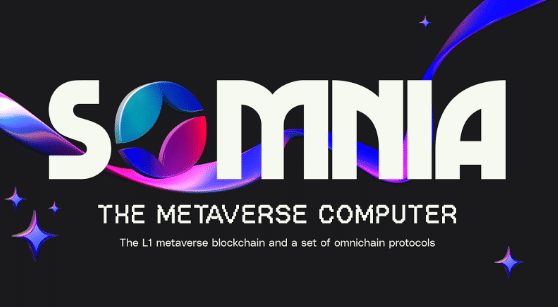.post-author {
position: relative;
padding-bottom: 0px;
height: 28px;
}
.author-image {
position: absolute;
bottom: 0;
left: -60px;
width: 100%;
border-radius: 0%;
cursor: pointer;
}
@media only screen and (max-width: 600px) {
.img {
position: absolute;
left: 20%;
width: 250px;
height: 200px;
}
.author-image {
left: 0px;
width: 100%;
}
.code-block .container {
padding: 0px;
}
.post-author {
margin-bottom: 0;
}
}

Virtual Society Foundation, or VSF, an independent organization working on developing the next iteration of the metaverse, announced the launch of the Somnia project, an EVM-based L1 platform and set of omnichain protocols. Somnia is a metaverse-based platform that allows the development and design of open and interoperable metaverses, allowing users to seamlessly move across different experiences.
Simply, the launch of Somnia will allow users to enjoy various experiences in the virtual world, connecting millions of metaverse enthusiasts in a single metaverse. This opens up endless possibilities on today’s siloed metaverse platforms, giving builders a platform to create portable and remixable content.
On the launch of Somnia, Paul Thomas, the founder, labelled it a “game changer for blockchain technology” and a “massive step for the metaverse”.
“Most blockchains are great for finance, and we have seen great innovations in DeFi, but scaling limitations have prevented more social and creative ventures from taking off,” Thomas further explained. “The protocols we are releasing will also enable the vision of a connected and composable metaverse which I hope will bring new community collaboration across the space.”
Impacting The Metaverse: Faster Speeds and Higher Scalability
One of the biggest drawbacks to the growth of the metaverse is the lack of scalable and fast blockchain platforms. Additionally, the metaverse space has been fragmented, making it hard for users and content creators to collaborate. As such, the value is concentrated across the metaverse holders rather than the builders.
Somnia aims to solve these problems, providing a blockchain that can support millions of transactions per second with the speed and affordability required to build a global virtual community. The platform is tailored for the metaverse. Over private prototype tests, Somnia has recorded hundreds of thousands of transactions per second with sub-second finality. The platform is designed to be interoperable, allowing builders to develop worlds and experiences, along with enabling assets, commerce, and avatars to move effortlessly across different experiences.
Notwithstanding, the protocols built on Somnia will allow existing NFT collections to be rendered as interoperable 3D objects. These 3D objects will be compatible with other metaverse experiences on the network, which is expected to give them additional value and utility across the metaverse. This could see Somnia grow into one of the largest metaverse platforms, impacting the gaming, NFT and metaverse sectors.
Creating a real virtual society
The main goal for Somnia is to create a real virtual world, whereby global users can connect and interact in a ‘global metaverse’. It will also launch a new creator economy, incentivizing builders and creators to share and remix content on the platform. It will allow avatars and objects to be sold everywhere, across any blockchain and value will be shared across all participants in the ecosystem, and everyone will have a voice
In the coming weeks, Somnia will launch the Betanet protocol, which aims to revolutionize gaming, sport and music in the virtual world. The platform, which will be integrated into MSquared’s experience engine Origin, will allow thousands of participants to attend sporting, gaming, and musical events virtually. Additionally, via a partnership with Avaturn, users can create interoperable avatars and establish their identity in the metaverse. Users can join the tens of events available on Betanet using their avatars and enjoy immersive experiences.



